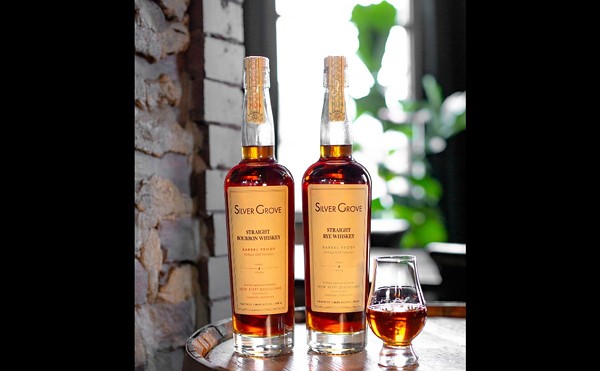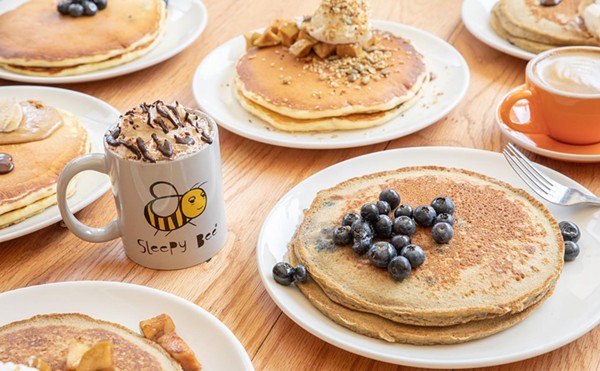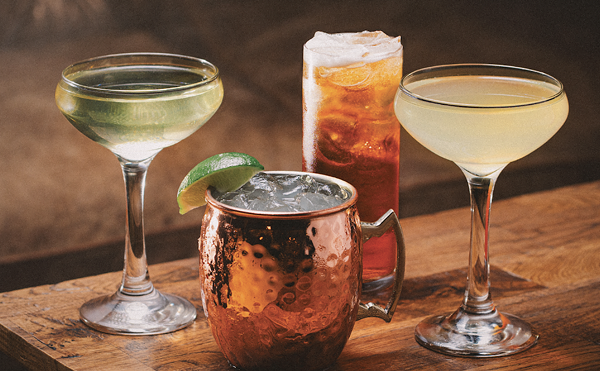|
My friends are in the Peace Corps in Kazakhstan. Their lives have changed dramatically as they learn the rules of the new culture, but whenever I talk about them all I can say is, "They eat horse."
Why can't I get past this fascinating fact? Never mind that they don't have indoor plumbing or the temperatures dip to 40 below zero. They eat horse, damn it!
Coming from an anthropological background, I've always been a tad voyeuristic, particularly when it comes to people's food habits. While some gleefully indulge in reading National Enquirer headlines in the grocery store line, I'm busy sneaking peeks into people's grocery carts, wondering what on earth the man behind me is cooking with eggplant, Velveeta and pomegranate juice.
I'm also the one in the restaurant craning my neck to see what just came out from the kitchen for your table, pointing and whispering a little too loudly, "Oooh, that looks good. I wonder what it is."
Anthropologists say that what we eat defines us — food marks whom we belong to and connects us to our past. Just look at the CityBeat food writers, if you don't believe me.
Craig Bida often refers to his Italian ancestry in his columns, Emily Lieb's family continues to crunch on Humphrey Popcorn Balls each Christmas and my recipe file is crammed with German tidbits from my grandmother's stash.
But as the "mutts" of this dog-eat-dog world, mixing ethnicities up in a giant experimental blender, it's difficult to identify any one American cuisine. Even while our palates cleave to the comfort of the past, we have developed globetrotting taste buds, flitting from Indonesian to Greek to French in a single week. Still, our identity includes being Americans (even if we're embarrassed by our current leaders) as well as by our heritage, and with our crazy quilt of variety how do we define American cuisine?
I found my answer quite by accident at a recent dinner party. In a room full of strangers who had little in common, we poked and prodded at topics like jobs and favorite movies until someone finally asked, "What's the best meal you ever had?"
Suddenly everyone was drawn into that room as if the aromas from the meals were conjured by the words. Party guests expounded like epic poets as they lovingly depicted the tastiest lobster they ever ate in some little hole of a restaurant that actually sat in the water on the coast of Maine, or that crazy little neighborhood café that made the best hash browns ever.
One guest tried to tell us about an appetizer he recently devoured: "It had ... chicken ... and pasta ... and sauce." You could hear him physically try to force these three words into what his taste buds experienced, knowing it could never happen yet valiantly trying to re-create this miracle dish for his audience.
As far back as the 1960s, when Julia Child and James Beard were knocking around, Americans began a love affair with food. With the more recent rise of star chefs — memoirs like Ruth Reichl's Garlic and Sapphires and "reality" shows like Celebrity Cooking Showdown — American foodie-ism has left its small circle of innovators and the public pursues it with a dedicated fervor. We now worship at the altar of the brick oven fire, and all that is holy comes on a plate drizzled with truffle oil. Even the "un-chic" are chic, embracing the dives and joints as closely as the gourmands hug a plate of diver scallops.
No matter our taste, we strongly proclaim it — living to eat rather than eating to live and enjoying talking about it almost as much as doing it. At the same party, another strain of food-related conversation brought as much enthusiasm. Thinking about my Peace Corps friends, I asked, "What foods would you never eat?"
One woman's daughter won't eat poultry because of their pet chicken, Fluffy. The woman, a nursing student, won't eat kidneys or liver because they filter waste out of the system. The host of the party makes soup with ox tail, a fact that makes my mother shudder.
What we will or won't eat is partially a cultural thing — sheep head bad, rib eye good — but eating is such an intimate act that our behavior is also very individualized. Eating, cooking and sharing food puts us into intimate contact with one another. The only thing more intimate is sex.
Some foods are taboo simply because of their likeness to certain unmentionables or because of their origin. Slimy things like snails and aspics can make us think of snot. My mother is notorious for looking at a plate just set down in front of her at a restaurant and suspiciously asking, "What's that?"
"Ah, food weird," a coworker knowingly nods when I broach the subject. A head pops up from the cubicle next door and another coworker joins us, eager to confess his own eating oddities.
"I have to eat each thing one at a time — first all the chicken, then all the potatoes, then all the vegetables. I don't know why," he shrugs.
Another flatly states, "I have a general rule about not eating organ meat." He's not alone in this.
Even though we try to fashion ourselves as food chic, much of our dining behavior stems from our country's Puritanical roots. That's why we eat spaghetti the way we do — rolled into a tight ball on our forks rather than lowering the strands into open mouths with our bare hands like they did in 19th-century Naples. As a society we value neatness, cleanliness and noiselessness when we eat.
The mom voice in our head says, "Chew with your mouth closed and elbows off the table, please," and we're aghast if we get a wine glass with lipstick on it.
And while cleanliness is all well and good, these roots and our love of science seem to have been transformed us into Howard Hughesian germaphobes. Our food pollution rules mainly seem to stem from these fears. Don't touch the chicken, and certainly don't let the raw chicken touch the raw vegetables.
While we don't carry it to same extent as the Hindus and Jains of India, where it is traditionally unheard of to touch the rim of a cup with your lips because you would pollute your own mouth, we still shrink from sharing from the same glass as our friend with a cold.
In a culture that has grown up on the polio vaccine, AIDS and Bird Flu, it's only natural that our history and obsession with science would transmogrify into a neurotic set of behaviors. A friend who used to serve in several area restaurants related a story about a couple who ate Sweet 'N Low on everything.
"They put it on their salads," he related in a horrified tone, "and mixed it in their ranch dressing. I was waiting for them to become one huge carcinogenic mass!"
Under the layers of our outward sheen of food hipness, a true American phenomenon lurks. You might scoff at this theory. Just try it next time you go out.
Sit close to your veggie friend, rip into your bloody red steak with your bare hands and then reach for one of her fries. Was that a shudder or wince? Ah, food weird.
Where to eat 2006, CityBeat's annual guide to great restaurants in Greater Cincinnati, is inserted in this week's issue. Contact Lora Arduser: [email protected]





